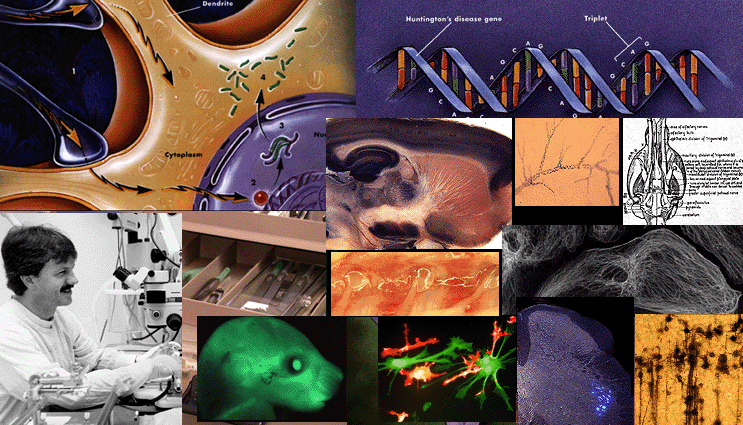AERD - Heading Descriptions |
AERD - Heading Descriptions |

![]()
|
Descriptions are ordered as they appear for "Database Records".
Antigen: Column lists the most common designation for antigen to which a given reagent was raised.
HAR number: Unique identifier automatically assigned by the database to distinguish individual antibodies. Reagent type: Denotes the antibody's reagent role (primary, secondary, tertiary - reagent). Anti-sera raised in: Species or organism in which the antibody was produced. Ab type: Antibody type. This notes a basic antibody class (monoclonal, polyclonal). Ig class: Immunoglobulin class (if relevant) for the indicated antibody (IgG, IgM, etc.) Ab recognize Ag in species: List those species in which the given antigen is recognized by the antibody (hu -human, ms - mouse, rt - rat, gt- goat, sh - sheep, dk - donkey, gp - guinea pig, cw -cow, y - yeast, b - bacteria) App. tested: Application tested. This notes the specific research application for which the given antibody has been tested (examples: F-flow cytometry, IC-immunocytochemistry, IH-immunohistochemistry, IP - immunoprecipitation, WB - Western blot,). Ab works for App.?: Antibody works for given application? For the conditions described in the record, indicates whether the anti-sera denoted produces an acceptable result for application(s) given. Sample type: Indicates the format of the sample examined. TSP - tissue section (paraffin), TSF - tissue section (frozen), CC - cell culture (immunohistochemistry), CE - cell extract (Western blot, immunoprecipitation), TE - tissue extract (Western blot, immunoprecipitation), WM - Whole mount (embryo), etc. Fixation/Lysis: Indicates fixation or lysis conditions (where relevant) used to for the specific application tested. Source: Indicates the specific source of the anti-sera described. Catalog number: Indicates the specific catalog number for the given source. Lot number / amount: Indicates the specific lot number and antibody amount provided from the given source for corresponding catalog number. This information is most frequently reported where the results obtained for a given antibody have been conflicting among various groups. Ab diluent: Antibody diluent. Indicates the solution components used to dilute a given anti-sera for the specific application tested. Preblock?: Indicates whether a preblocking step is required for the indicated conditions. Dilutions tested: Dilution tested. Indicates the relative dilution of the given antibody useful for the indicated research application. Inc. time: Incubation time. Indicates the time for which the indicated antibody was incubated for the given application. Inc. temp.: Incubation temperature. Indicates the temperature at which the indicated antibody was incubated for the given application. Ab control: Antibody control. Suggestions for positive controls (typically tissue components) which contain significant levels of the antigen described. Ag code: Antigen code. This column provides a unique identifier (where possible) for a given antigen. This information allows investigators to unequivocally determine the identity of a given antigen (common names do not always prove to be unique identifiers), and allow linkage to additional information about a particular antigen (by submitting its code to the link registries given at the bottom of the "Query" or "Submit" pages). Typically, this information is not provided at the time of submission, but rather is added by the AERD at a later date. However, individuals wishing to provide a submission code can do so using the appropriate links at the bottom of the "Submit" page. In cases where the anti-sera recognizes a wide (cross) species distribution of the antigen, the antigen code information (if provided) will refer to the antigen from the species originally used to raise the anti-sera. Antigen codes are as follows: Proteins - identified by CCDS numbers, indicated in database by (CCDS xxxxx.x). Note that at present the CCDS principally contains ID's for human and murine proteins, however is expanding its content on a continuous basis. Determine a protein's CCDS number: CCDS database.
Small molecules - identified by CAS registry numbers, indicated in database by (CAS xxx-xx-xx).
Carbohydrates / Lipids - Because of potential isoform complexity, at present we are only identifing these antigens by PDB (crystallographic) codes, indicated in database by (PDB xxxx). Determine PDB number: "Protein data bank". Ag synonyms: Antigen synonyms. Alternative names for the given antigen. Immuniz. info.: Immunization information. This column lists any relevant information regarding the production of the indicated anti-sera, and/or the peptide used for immunization. Additional info.: Additional information (highlighted). Submissions in this column spawn a separate web page in which the user can provide additional comments regarding the given antibody which are not appropriately captured in the other columns provided. Lab reporting: This column denotes the source (principal investigator's last name for the academic laboratory) providing information for the described antibody. |
![]()
![]()
![]()